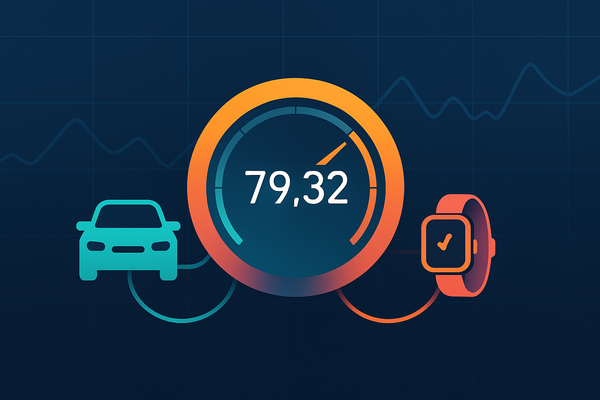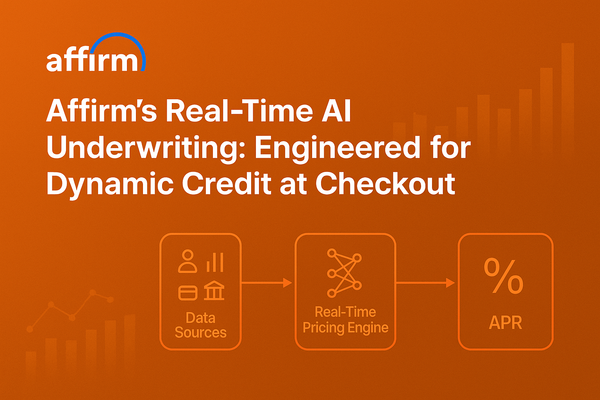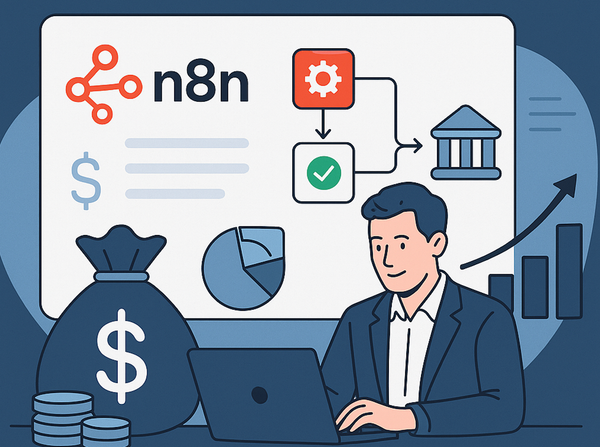The Price of Bread

Picture this: you stroll into your local grocery store, grab a loaf of bread, and see the price tag reads $3.00. It doesn’t feel surprising—it feels “right.” But pause: what do you really know about how that price came to be?
— You don’t know how much the wheat cost.
— You don’t know the baker’s labor, the electricity, the transportation.
— And yet, you know in your gut whether $3 seems fair—or not. Why?
Because price isn’t just a number. It's a powerful story, shaped by your memory, expectations, and context. You compare it to what bread used to cost, what brand-name loaves go for, or what the markdown on the end-cap says.
That subjective “feel” of a price isn’t random—it reflects the hidden interplay of psychology and perception.
The Psychology of Price: How Our Minds Judge Value
Let’s break down the key psychological mechanisms behind why we feel a price is “fair” or “too high”:
1. Anchoring: The Power of the First Number
When you see a price—or the “regular” price next to a sale price—that first number becomes an anchor. Your brain adjusts from there. Even if the anchor is arbitrary, it still shapes your perception of value. This anchoring effect is hard to escape—and research shows it sticks around even if you’re warned about it.
An experiment involving consumers evaluating product prices confirmed this: when anchored by a high or low price, people adjusted insufficiently, skewing their judgments in predictable ways. Frontiers
2. Reference Prices: The Ghosts in Your Head
Ever look at a bottle of wine and think, “That’s expensive,” only to see a superstar-priced option next to it? That premium wine serves as a reference, making the $25 bottle look reasonable.
Consumers lean on internal reference prices (the price you expect) and external anchors (adjacent prices) to judge value. Marketers often highlight “regular” versus “sale” prices to steer perception. ScienceDirect Oxford Academic
3. Charm Pricing: $9.99 vs. $10
Ever wonder why so many prices end in .99 or .95? This isn’t nostalgia—it's psychology. Our brains latch on to the leftmost digit, so $9.99 feels significantly cheaper than $10.00.
This “just-below” pricing—also known as “psychological pricing”—nudges consumers toward a purchase by triggering that subtle notion of a deal. Wikipedia
4. Good–Better–Best Tiers: The Middle Option Appeal
Presenting tiers—“good,” “better,” “best”—plays on anchoring and value signaling. Harvard Business Review calls this the powerful “Good–Better–Best” approach. One retailer doubled sales of a mid-tier model simply by introducing a higher-priced premium option to make the original look like a bargain. Wikipedia
5. The Emotional & Cognitive Context
Anchoring isn't just about numbers—it’s modulated by mood, confidence, knowledge, even time pressure. Happy consumers may evaluate more thoroughly, while those under time pressure or with low confidence fall back on heuristics. Frontiers
Why We Don’t Know the True Cost (And That’s Okay)
Back to that loaf of bread: what does “$3.00” actually cover?
- Raw materials: wheat, water, yeast, packaging.
- Production costs: labor, ovens, rent, utilities.
- Transportation, retailer markup, spoilage, marketing and overhead.
- The baker’s profit margin—plus whatever padding the supply chain tacked on.
For consumers, none of this is visible. Instead, your price perception leans on:
- Your personal history of bread prices (“It was $2.50 a year ago!”).
- The competitive context (“The organic loaf is $3.50, so $3 feels fair.”).
- Presentation and psychology (“$2.99” on a sign vs. “$3.00” on a price tag).)
In effect, price is less about cost and more about narrative: “Here’s what I paid last week, and here’s what the store wants me to pay now.” And your gut stitches together that story—even when the real numbers lie beneath.
Pricing as Strategy: 8 Ways to Price Your Product
Now that we’ve mapped how customers perceive price, let’s turn the lens around: how can you, as a business owner, use pricing strategies—leveraging psychology and economics—to meet your goals?
Experts typically group pricing strategies into several categories. Here are eight you can use, with real-world framing:
1. Cost-Plus Pricing
You calculate your total cost, then add a markup. Simple, reliable—great for ensuring margins.
But beware: it ignores market dynamics and customer perception. It can leave money on the table if customers would pay more. BDC.ca
2. Competitor-Based Pricing
Match or beat your competitors’ prices—common in saturated markets like grocery stores or commoditized products.
It’s reactive, and may lead to price wars. But in tight-margin markets, it helps you stay competitive. Common in small retail. Vendr
3. Value-Based Pricing
Price based on what your product is worth to the customer—not just what it cost you.
This works best when you deliver clear, differentiating value—quality, convenience, experience.
Two flavors:
- Good-Value Pricing – fair price for clear, high quality.
- Value-Added Pricing – higher price justified by extras or emotion. Investopedia
4. Price Skimming
Launch with a high price—then gradually lower it. This captures early adopters willing to pay more, then broadens appeal.
Risk: it signals luxury and may limit broader adoption. BDC.ca
5. Penetration Pricing
Introduce your product with a low price to gain market share—then raise prices once you've established value.
Great for new entrants, but can hamper future pricing flexibility and anchor low expectations. BDC.ca
6. Psychological Pricing
This is where the behavior theory meets your pricing tags:
- Charm pricing: using .99 or .95 endings to feel lower. Wikipedia
- Anchored tiers: Good-Better-Best or explicit “was vs. now” pricing ScienceDirect
7. Bundle and Loss-Leader Pricing
Group products together (bundle) or discount a key item (loss-leader) to drive broader purchases.
Retailers do this all the time: discount one item to pull customers in, who then buy full-priced bread, cheese, wine. POS Nation
8. Price Discrimination & Tiering
Charge different prices based on version, quantity, or customer group:
- Versioning: basic vs. premium plans (second-degree discrimination).
- Group pricing: student discounts, senior rates (third-degree). Investopedia
This enables capturing more of the consumer surplus—and is everywhere in SaaS, retail, and services.
Choosing the Right Pricing Strategy for Your Business
So, where should you start? Here are some guiding principles as you decide:
- Know your costs—but don’t stop there. Cost-plus gives a number baseline, but your real decisions come from customer value and competitive context.
- Understand your customers. Are they price-sensitive bargain seekers—or value-seeking invest-in-quality buyers?
- Think tiers and anchors. Even if your product is single-tier, framing it against “regular” or “premium” versions can shape perception.
- Test pricing psychology. Try .99 vs. round numbers. Introduce a “deluxe” version not to sell, but to lift the middle option.
- Watch for anchoring pitfalls. If you raise prices, do so with care—not in a way that triggers sticker shock (e.g. “regular -> sale” framing can backfire over time).
- Be strategic about low introductory pricing. If adopting penetration strategy, plan how and when you’ll raise to avoid long-term low expectations.
- Use versioning smartly. Offer multiple tiers or bundles to reach different customer segments without diluting base value.
In sum: price is both a signal and a strategy. It tells your customers what you stand for—whether high-end or high-value—and shapes whether they feel they’re getting a fair deal.
Bringing It Back to the Loaf of Bread
Next time you scan a price tag in the supermarket or online, think: What’s anchoring that price? Does $2.99 feel cheap because I expect $3.49, or because I remember buying it for $2.50 a year ago? Is that store comparing it to the premium bakery that charges $4.50? Is the .99 ending doing its trick?
As a business owner, the more you understand that invisible tug on your customers’ minds, the better you can meet their expectations—or gently shift them. Smart pricing isn’t about guessing what “should” cost—it’s about crafting what does cost in perception.
Conclusion: Price = Story + Psychology + Strategy
Price isn’t simply the sum of costs. It's a narrative woven from your customer’s past, your market’s signals, and subtle psychological triggers—nudged by anchors, tiers, and endings.
By grounding your pricing approach in both economic logic and psychological insight, you don’t just choose a price—you shape the story your product tells. And if that story resonates, customers don’t hesitate. They feel good about the number on the tag.



